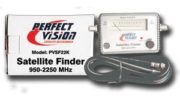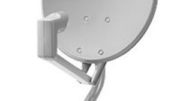Ask anyone. The worst kind of problem is one that doesn’t happen all the time. If your satellite TV was totally out, that might not be easy to fix. But, you’d get a technician out and they would know where to start replacing things. But, just imagine that you got every channel except one. That’s going to be a lot harder to diagnose. It’s going to be even harder to fix.
How could this even happen?
In order to have some understanding of this sort of problem, you need to understand how channels come down from the satellite. Both DIRECTV and DISH have thousands of individual channels. Most are local channels that you can’t get in your area anyway (but that might be a cause of your problem, and I’ll get to that.) In order to deliver that many channels, they need many different satellites. Each satellite has many different transponders. Each transponder can hold several different channels. Believe it or not, that satellite dish you’ve got can keep it all straight so when you tune to a channel, you get that channel. Except, of course, when it doesn’t work.
Here’s something they don’t want you to know. The channels carried on each satellite are constantly changing. The channels carried on each transponder are constantly changing. This is done for a lot of reasons. In some cases, you have temporary channels like sports and event channels that need room. In some cases new encoding equipment is put in that requires things be moved around. These days it’s rare that we see new channels, but when there are new ones things move around as well.
You generally don’t even know this is happening, because it happens seamlessly. Sometimes though there is a hiccup and your receiver doesn’t get the word that a channel has moved. So it looks for that channel in the wrong place, leading to your not being able to see it.
Another potential issue
The satellite dish itself is incredibly reliable for what it is, but it’s not perfect. Sometimes there’s a weakness within it that keeps it from receiving one frequency very well. Sometimes it can be an obstruction, sometimes it can even be a loose connection. In a case like this, a technician replaces all or part of the dish to see if the problem can be found and fixed.
But how can you know?
From the point of view of a person like you who “just wants to watch TV,” it’s hard to know what’s really going on. There are three simple steps you can take to get a problem like this diagnosed.
1. The reboot
Sometimes rebooting your receiver just fixes the problem. That will force your receiver to pull a whole new list of what channel is where, and sometimes that’s all it takes. Find and push the red button on your receiver, DVR, or client and see if that fixes it. If you have a Genie system, reboot the main Genie DVR as well.
2. The unplug
The next step is to completely unplug everything in your satellite system. This will power down your satellite dish as well. Make sure if you have external multiswitches that they are unplugged as well, and that any power inserters are also unplugged. Leave things like that for five minutes, then plug everything back in.
3. Tighten up
It’s rare, but sometimes this is simply a matter of loose cables. Get behind the receiver and tighten up the cable. If need be, take it off and put it back on again. If all the receivers are having the same problem, tighten up the cable from the dish or multiswitch. Cables should be just slightly more than finger tight.
4. The phone call
If none of that works, call the experts! The folks at Signal Connect have special tools to help understand what’s going on. We can help you with a lot right on the phone. If a technician needs to come to you, we can help with that too. We’re DIRECTV and DISH dealers and have access to the same computer systems that they use.
Call during East Coast business hours to 888-233-7563 and we’ll give you the customer service you deserve. We’ll help find the cause of this pesky problem so all you have to do is watch TV the way you want. If it’s after hours, fill out the form below and we’ll get back to you, usually within one business day.





